Forensic Science
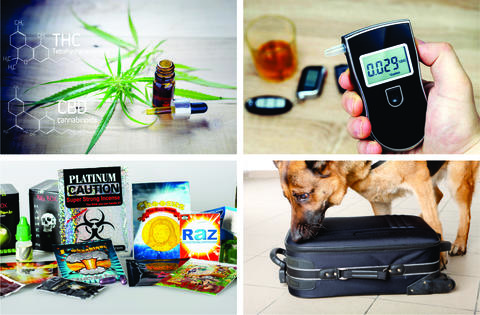
NIST provides tools to help forensic crime laboratories validate their analytical methods and ensure accuracy in their results for DNA and biological evidence, fingerprint and pattern evidence, illicit drugs, digital evidence, ballistics, and trace evidence. NIST generates reference materials, reference data, analytical methods, and documentation to support forensic scientists in the laboratory and courtroom. The Organic Chemical Metrology Group of the Chemical Science Division at NIST currently has forensic project areas in Cannabis (hemp and marijuana), Novel Psychoactive Substances, Explosives, and Blood Alcohol Testing.
Project Areas
NIST Tools for Cannabis Laboratory Quality Assurance
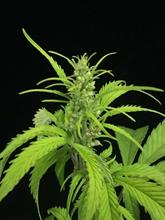
Since the 1970s, Cannabis (marijuana and hemp) and its psychoactive constituent, Δ9-tetrahydrocannabinol or THC, have been classified as Schedule I controlled substances. Seized evidence is tested by forensic laboratories, who verify the identity of the plant through macro- and microscopic evaluation and the presence of THC through presumptive and confirmatory chemical testing. Drug scheduling has directed the testing approaches, as qualitative confirmation of the presence of THC was sufficient to demonstrate possession of a controlled substance. Currently, marijuana and THC remain on the controlled substances list, although medical marijuana is legal in 33 states and recreational marijuana is legal in 11 states as well as the District of Columbia. The 2018 Farm Bill defined hemp as Cannabis containing less than 0.3 % THC and removed hemp from the controlled substances list. These legal changes have required forensic laboratories throughout the United States the need to implement quantitative analytical methods to distinguish Cannabis seizures as marijuana or hemp. However, the majority of these laboratories have little to no experience in or are accredited to perform quantitative drug analysis. The Chemical Sciences Division at NIST is developing an integrated measurement services program for Cannabis to ensure the quality of routine analysis in forensic laboratories to confidently distinguish between hemp and marijuana in seized Cannabis samples with a three-pronged approach: (1) robust analytical methods for a variety of technologies (GC-MS, LC-UV, LC-MS/MS); (2) Cannabis Reference Materials; and (3) Cannabis Quality Assurance Program (CannaQAP). For additional technical information please refer to the CSD Cannabis website.
Novel Psychoactive Substances (NPS) Data Hub
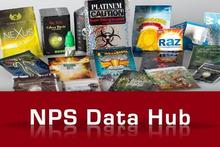
Due to the increasing workload in forensic drug laboratories for the identification of NPSs in drug seizures, NIST has been working with the United States Drug Enforcement Agency (DEA) and the Federal Criminal Police Office of Germany – Bundeskriminalamt (BKA) to develop a web-based drug database to facilitate rapid, community-leveraged expert drug identification of newly emerging drugs. The identification of newly appearing NPSs is conducted by forensic laboratories from analytical data evaluations, which are uploaded together with supporting analysis, to the web-based platform supported through a peer-review process. In support of this project, NIST has focused on developing low-field NMR and Raman spectroscopy techniques for NPSs. For additional technical information please refer to the NPS Data Hub website.
Metrology and Standards for Canine Olfactory Detection and Explosiveness
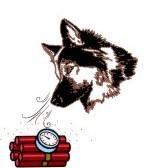
Trained dogs are the most frequently deployed detection systems for identification of explosives threats in mobile applications. A key factor in effective deployment of canine detection is the use of appropriate training aids. NIST has a multi-year interagency agreement between the Office of Standards of the Department of Homeland Security for developing measurement tools for and providing compositional data on explosives; investigating the mechanisms of canine olfaction; designing NIST Reference Materials (RMs); and promoting 'best practices' to evaluate the performance of dogs in the detection of trace explosives. For additional technical information please refer to the Canine Detection website.
Blood Alcohol Testing
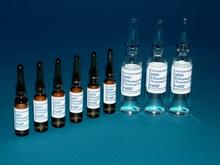
NIST offers a series of ethanol-water SRMs listed below for alcohol testing. These SRMs are intended to be used in the calibration of instruments and techniques used for the determination of ethanol in aqueous solutions, such as in alcohol in blood and breath. NIST offers these solutions in several legally relevant levels to support alcohol testing for zero tolerance, state levels for driving while intoxicated, and high-level blood alcohol measurements. NIST also offers ethanol-water SRMs at higher ethanol levels that can be used to prepare calibrants.
Measurement Services
Cannabis Quality Assurance Program (CannaQAP)
The Cannabis Quality Assurance Program (CannaQAP) can be viewed by forensic laboratories as a perpetual interlaboratory study mechanism that is akin to a proficiency testing (PT) scheme but without the pass/fail grade. The forensic laboratories participating with CannaQAP will be able to assess their in-house measurements with the goal of improving their analytical methods. All results from CannaQAP studies are peer-reviewed and made publicly available as published NIST Internal Reports, however the identities of individual laboratories are anonymized and known only to them and NIST. Each exercise within this program will be free of charge to participants but will be required to pay shipping cost. For additional information, visit the CannaQAP website or contact the CannaQAP Team at cannabis [at] nist.gov (cannabis[at]nist[dot]gov).
Reference Materials for Blood Alcohol Testing
- SRM 1828c Ethanol-Water Solution (Six Levels)
- SRM 2891 Ethanol-Water Solution (norm., 0.02 %)
- SRM 2892 Ethanol-Water Solution (norm., 0.04 %)
- SRM 2893a Ethanol-Water Solution (norm., 0.08 %)
- SRM 2894 Ethanol-Water Solution (norm., 0.1 %)
- SRM 2895 Ethanol-Water Solution (norm., 0.2)
- SRM 2896 Ethanol-Water Solution (norm., 0.3 %)
- SRM 2897a Ethanol-Water Solution (norm., 2 %)
- SRM 2898a Ethanol-Water Solution (norm., 6 %)
- SRM 2899a Ethanol-Water Solution (norm., 25 %)
- SRM 2900 Ethanol-Water Solution (norm., 95.6 %)
- SRM 2896 Ethanol-Water Solution (norm., 0.3 %)
Past Forensic Science Meetings at NIST
Virtual-Forensics @ NIST 2020 & Workshops – November 5-6, 2020
Forensics@NIST will take place virtually on November 5th and will consist of a morning session will be webcasted to include statistical methods in forensic science. The afternoon will be dedicated to breakout sessions covering drugs/toxins, firearms and tool marks, digital and multimedia, forensic genetics, and trace.
NIST 2020 Forensic Cannabis Workshop – November 6th
This half-day event on November 6th will consist of multiple presentations and 30 – 60 min roundtable discussion. Presentations will focus on the integrated measurement services program for Cannabis to ensure the quality of routine analysis in forensic laboratories. The tools developed at NIST will ensure the quality assurance of routine analysis for confiscated Cannabis (hemp and marijuana) samples and confirm the confidence in sample type differentiation. This workshop will include presentations from NIST researchers and outside collaborators from County and State laboratories in the United States. NIST presenters will provide an overview of the newly developed sample preparation protocols, qualitative colorimetric test, quantitative analytical methods (i.e. LC-UV, LC-MS/MS, GC-MS, and portable IR detectors), interlaboratory study results, and updates on a Cannabis RMs. NIST collaborators will present on their in-house Cannabis protocols, analytical methods, validation schemes, and involvements with NIST through interlaboratory studies. The workshop will include a round table discussion for the presenters to answer questions and exchange ideas with the audience.
Applications, Considerations, and Strategies for Implementation of DART-MS in Forensic Laboratories – November 6th
This workshop aims to provide forensic practitioners, laboratory managers, and legal personnel with the information to understand what DART-MS is, identify whether it would be beneficial for their laboratories, and learn about how other laboratories are utilizing the technique. Topics that will be covered in the workshop include fundamentals of Dart-MS, current drug applications, validation strategies, practical and legal implementation, novel sampling protocols, and casework approaches. Presenters will include researchers from NIST and NIJ, chemist from state and federal laboratories who are active users of the technology, and instrument manufacturers.
Associated References
1. Urbas, A. A., Corbett, C. A., and Mazzola, E. P., "NMR in forensics," Magnetic Resonance in Chemistry, (2022).
2. Wilson, W. B. and Abdur-Rahman, M., "Determination of 11 Cannabinoids in Hemp Plant and Oils by Liquid Chromatography and Photodiode Array Detection," Chromatographia, 85, 115-125 (2022).
3. Charbonnet, J. A., Rodowa, A. E., Joseph, N. T., Guelfo, J. L., Field, J. A., Jones, G. D., Higgins, C. P., Helbling, D. E., and Houtz, E. F., "Environmental Source Tracking of Per- and Polyfluoroalkyl Substances within a Forensic Context: Current and Future Techniques," Environ. Sci. Technol., 55, 7237-7245 (2021).
4. Mann, J. L., Molloy, J. L., Buscaglia, J., Pfeuffer, K. P., Fallon, B. L., and Tyra, M. A., "Assessing the microscale heterogeneity in Standard Reference Material 4600 Surrogate Post-detonation Urban Debris," Applied Radiation and Isotopes, 172, (2021).
5. Peart, C. R., Williams, C., Pophaly, S. D., Neely, B. A., Gulland, F. M. D., Adams, D. J., Ng, B. L., Cheng, W., Goebel, M. E., Fedrigo, O., Haase, B., Mountcastle, J., Fungtammasan, A., Formenti, G., Collins, J., Wood, J., Sims, Y., Torrance, J., Tracey, A., Howe, K., Rhie, A., Hoffman, J. I., Johnson, J., Jarvis, E. D., Breen, M., and Wolf, J. B. W., "Hi-C scaffolded short- and long-read genome assemblies of the California sea lion are broadly consistent for syntenic inference across 45 million years of evolution," Molecular Ecology Resources, 21, 2455-2470 (2021).
6. Bailey, D. J., Stennett, M. C., Ravel, B., Crean, D. E., and Hyatt, N. C., "A synchrotron X-ray spectroscopy study of titanium co-ordination in explosive melt glass derived from the trinity nuclear test," Rsc Advances, 9, 12921-12927 (2019).
7. Verkouteren, R. M., Heckert, N. A., Leigh, S., Sisco, E., Norris, J. E., Lawrence, J., and Burns, A., "ASTM E2677: International Standard on Limit of Detection for Trace Detectors-Explosives, Opioids, and Ozone," Detection Limits in Air Quality and Environmental Measurements, 1618, 31-48 (2019).
8. Biegalski, S., Kane, N., Mann, J., Tipping, T., and Dayman, K., "Neutron activation of NIST surrogate post-detonation urban debris (SPUD) candidate SRMs," Journal of Radioanalytical and Nuclear Chemistry, 318, 187-193 (2018).
9. Fleisher, A. J., Long, D. A., Liu, Q. N., Gameson, L., and Hodges, J. T., "Optical Measurement of Radiocarbon below Unity Fraction Modern by Linear Absorption Spectroscopy," Journal of Physical Chemistry Letters, 8, 4550-4556 (2017).
10. Sharp, N., Fassett, J. D., and Simons, D. S., "Uranium ion yields from monodisperse uranium oxide particles," Journal of Vacuum Science & Technology B, 34, (2016).
11. Gillen, G., Najarro, M., Wight, S., Walker, M., Verkouteren, J., Windsor, E., Barr, T., Staymates, M., and Urbas, A., "Particle Fabrication Using Inkjet Printing onto Hydrophobic Surfaces for Optimization and Calibration of Trace Contraband Detection Sensors," Sensors, 15, 29618-29634 (2015).
12. Andersson, N., Baker, J., Belczynski, K., Bernuzzi, S., Berti, E., Cadonati, L., Cerda-Duran, P., Clark, J., Favata, M., Finn, L. S., Fryer, C., Giacomazzo, B., Gonzalez, J. A., Hendry, M., Heng, I. S., Hild, S., Johnson-McDaniel, N., Kalmus, P., Klimenko, S., Kobayashi, S., Kokkotas, K., Laguna, P., Lehner, L., Levin, J., Liebling, S., MacFadyen, A., Mandel, I., Marka, S., Marka, Z., Neilsen, D., O'Brien, P., Perna, R., Read, J., Reisswig, C., Rodriguez, C., Ruffert, M., Schnetter, E., Searle, A., Shawhan, P., Shoemaker, D., Soderberg, A., Sperhake, U., Sutton, P., Tanvir, N., Was, M., and Whitcomb, S., "The transient gravitational-wave sky," Classical and Quantum Gravity, 30, (2013).
13. Irikura, K. K., "Aminoxyl (Nitroxyl) Radicals in the Early Decomposition of the Nitramine RDX," Journal of Physical Chemistry A, 117, 2233-2241 (2013).
14. Poster, D. L., Kucklick, J. R., Schantz, M. M., Porter, B. J., Sander, L. C., and Wise, S. A., "New developments in Standard Reference Materials (SRMs) for environmental forensics," Environmental Forensics, 8, 181-191 (2007).
15. Irikura, K. K. and Johnson, R. D., "Is NO3 formed during the decomposition of nitramine explosives?," Journal of Physical Chemistry A, 110, 13974-13978 (2006).
16. Maccrehan, W. A. and Bedner, M., "Development of a smokeless powder reference material for propellant and explosives analysis," Forensic Science International, 163, 119-124 (2006).
17. Maccrehan, W. A., Bedner, M., and Benner, B. A., "Development of NIST reference materials supporting explosives measurements," Abstracts of Papers of the American Chemical Society, 230, U342 (2005).
18. Maccrehan, W. A., Reardon, M. R., and Duewer, D. L., "A quantitative comparison of smokeless powder measurements," Journal of Forensic Sciences, 47, 1283-1287 (2002).
19. Munder, A., Christensen, R. G., and Wise, S. A., "Microanalysis of Explosives and Propellants by Online Supercritical Fluid Extraction Chromatography with Triple Detection," Journal of Microcolumn Separations, 3, 127-140 (1991).
20. Munder, A., Chesler, S. N., and Wise, S. A., "Capillary Supercritical Fluid Chromatography of Explosives - Investigations on the Interactions Between the Analytes, the Mobile Phase and the Stationary Phase," Journal of Chromatography, 521, 63-70 (1990).

